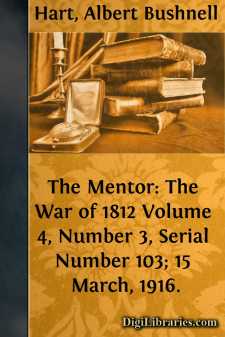Categories
- Antiques & Collectibles 13
- Architecture 36
- Art 48
- Bibles 22
- Biography & Autobiography 813
- Body, Mind & Spirit 142
- Business & Economics 28
- Children's Books 17
- Children's Fiction 14
- Computers 4
- Cooking 94
- Crafts & Hobbies 4
- Drama 346
- Education 46
- Family & Relationships 57
- Fiction 11829
- Games 19
- Gardening 17
- Health & Fitness 34
- History 1377
- House & Home 1
- Humor 147
- Juvenile Fiction 1873
- Juvenile Nonfiction 202
- Language Arts & Disciplines 88
- Law 16
- Literary Collections 686
- Literary Criticism 179
- Mathematics 13
- Medical 41
- Music 40
- Nature 179
- Non-Classifiable 1768
- Performing Arts 7
- Periodicals 1453
- Philosophy 64
- Photography 2
- Poetry 896
- Political Science 203
- Psychology 42
- Reference 154
- Religion 513
- Science 126
- Self-Help 84
- Social Science 81
- Sports & Recreation 34
- Study Aids 3
- Technology & Engineering 59
- Transportation 23
- Travel 463
- True Crime 29
Formation of the Union, 1750-1829
Categories:
Description:
Excerpt
1. REFERENCES
BIBLIOGRAPHIES.—R. G. Thwaites, Colonies, §§ 39, 74, 90; notes to Joseph Story, Commentaries, §§ 1-197; notes to H. C. Lodge, Colonies, passim; notes to Justin Winsor, Narrative and Critical History, V. chs. ii.-vi., Channing and Hart, Guide, §§ 130-133.
HISTORICAL MAPS.—R. G. Thwaites, Colonies, Maps Nos. 1 and 4 (Epoch
Maps, Nos. 1 and 4); G. P. Fisher Colonial Era, Maps Nos. 1 and 3;
Labberton, Atlas, lxiii., B. A. Hinsdale, Old Northwest (republished
from MacCoun's Historical Geography).
GENERAL ACCOUNTS.—Joseph Story Commentaries, §§ 146-190; W. E. H.
Lecky, England in the Eighteenth Century, II. 1-21, III. 267-305; T. W.
Higginson, Larger History, ch. ix.; Edward Channing, The United
States, 1765-1865 ch. i.; H. E. Scudder, Men and Manners in America;
Hannis Taylor, English Constitution, Introduction, I.; H. C. Lodge,
Colonies (chapters on social life); T. Pitkin, United States, I.
85-138, Justin Winsor, Narrative and Critical History, V. chs. ii.-vi.;
R. Frothingham, Rise of the Republic, chs. i., iv.; Grahame, United
States, III. 145-176.
SPECIAL HISTORIES.—W. B. Weeden, Economic and Social History of New
England, II. chs. xiv., xv.; G. E. Howard, Local Constitutional
History, I. chs. ii., iii., vii.-ix.; C. F. Adams, History of Quincy,
chs. iii.-xiv.; M. C. Tyler, History of American Literature, II.; Edward
Channing, Town and County Government, and Navigation Acts; F. B.
Dexter, Estimates of Population; C. F. Bishop, Elections in the
Colonies; Wm. Hill, First Stages of the Tariff Policy; W. E. DuBois,
Suppression of the Slave Trade; J. R. Brackett, Negro in Maryland.
CONTEMPORARY ACCOUNTS.—Benjamin Franklin, Autobiography (1706-1771); John Woolman Journal (1720-1772); George Whitefield, Journals (especially 1739); Kalm, Travels (1748-1749); Robert Rogers, Concise Account of North America (1765); A. Burnaby, Travels (1759-1760); Edmund Burke, European Settlements in America; William Douglass, Summary; the various colonial archives and documents.—Reprints in II. W. Preston, Documents Illustrative of American History (charters, etc.); New Jersey Archives, XI., XII., XVIII. (extracts from newspapers); American History Leaflets, No. 16; Library of American Literature, III.; American History told by Contemporaries, II.
2. COLONIAL GEOGRAPHY.
[Sidenote: British America.]
By the end of the eighteenth century the term "Americans" was commonly applied in England, and even the colonists themselves, to the English- speaking subjects of Great Britain inhabiting the continent of North America and the adjacent islands. The region thus occupied comprised the Bahamas, the Bermudas, Jamaica, and some smaller West Indian islands, Newfoundland, the outlying dependency of Belize, the territory of the great trading corporation known as the Hudson's Bay Company, and—more important than all the rest—the broad strip of territory running along the coast from the Gulf of St. Lawrence to the Altamaha River.
[Sidenote: Boundaries.]
It is in this continental strip, lying between the sea and the main chain of the Appalachian range of mountains, that the formation of the Union was accomplished....



